order
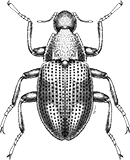
Coleoptera
“Adult Beetles”

Coleoptera
“Larval Beetles”

Diptera
“True Flies”

Ephemeroptera
“Mayflies”
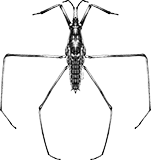
Hemiptera
“True Bugs”

Lepidoptera
“Aquatic Caterpillars, Snout Moths”

Megaloptera
“Alderflies, Dobsonflies, and Fishflies”
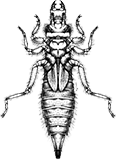
Odonata
“Dragonflies and Damselflies”
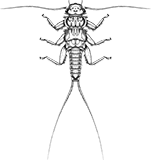
Plecoptera
“Stoneflies”
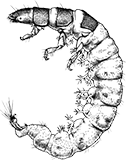
Trichoptera
“Caddisflies”
family
Limnephilidae
Ironoquia
“Northern Casemaker Caddisflies”
Genus Overview
Ironoquia have four species in North America. They live in temporary pools and streams. Larval length is up to 27 mm.
Characteristics
POLLUTION TOLERANCE
Southeast: 7.3
Upper Midwest: 3
0 = least tolerant, 10 = most tolerant
FEEDING HABITS
Shredder / Detritivore
MOVEMENT
Sprawler
DISTRIBUTION
Widespread (east of the Rocky Mtns.)
HABITAT
Lentic-littoral
Lotic-depositional
Lotic-depositional
Diagnostic Characters
order
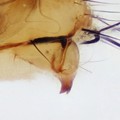
Prolegs With Single Hook
family
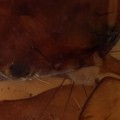
Antenna Between Mandibles and Eyes
genus
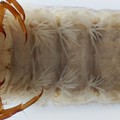
Gills With More Than Four Filaments
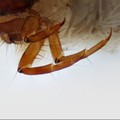
Major Setae On Femur
+ Expanded Character List
Order:
Larvae: Wings/wing pads absent. Eye spots present, but compound eyes absent. Antennae usually small, inconspicuous. Three pairs of segmented legs present on thorax. Pair of anal prolegs, each with single hook, located on last abdominal segment. Larvae can be free-living, in silken retreats attached to substrate, or in usually-portable tubes or cases made of sand, rocks, or plant material.
Family:
As in all families of superfamily Limnephiloidea, short, inconspicuous antennae are each located about midway between base of mandible and eye. Prosternal horn usually present. Chloride epithelia usually present on at least some abdominal segments. Otherwise distinguished from other Limnephiloidea families as follows: Mandibles usually toothed and setae usually absent between anterodorsal (sa1) sclerites or, if present then fewer than 25 setae (unlike Apataniidae). Mesonotum not notched along anterior margin (unlike Thremmatidae). Mesopleura not expanded as in Goeridae. Larvae usually large when mature and building tubular cases of varying materials, usually rocks or rough plant materials. Mature larvae 6–30 mm.
Genus:
Gills on abdomen are more than four filaments, more than two major setae along ventral edge of femur
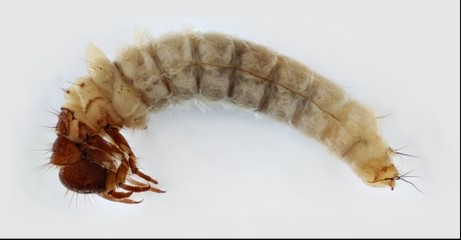
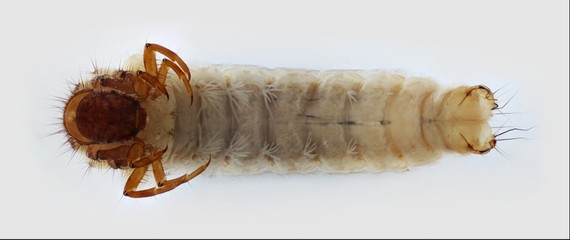
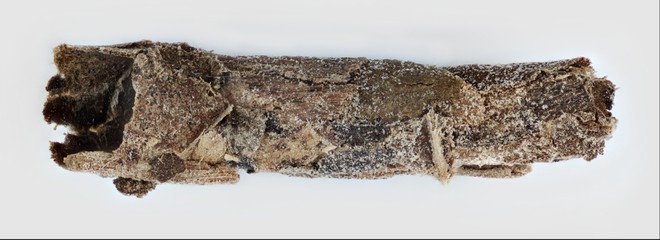
Lateral
Ventral
Case



